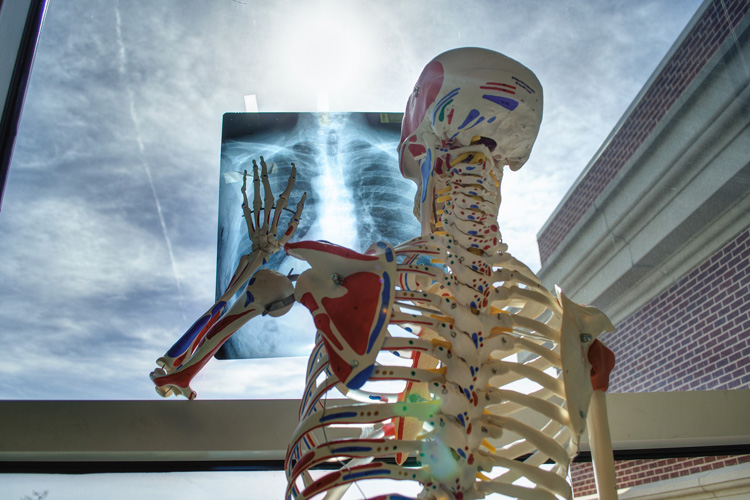A new technology now available at Banner Boswell Medical Center is helping doctors diagnose lung cancer sooner, at an earlier stage and when cancerous nodules are smaller.
The SuperDimension Navigation System offers a minimally invasive approach to accessing difficult-to-reach areas of the lung, which can aid in identifying lung disease.
“With this navigational technology, we create a GPS system of the patient’s airways where the nodule is located, and that information is available in real-time during the procedure. That helps fine-tune the exact location of this spot,” said Dr. Archan Shah, a Banner MD Anderson Cancer Center interventional pulmonologist at Banner Boswell. He also sees patients at Banner MD Anderson in Gilbert.
Using a patient’s CT scan, the system’s software generates a 3D virtual roadmap that allows doctors to navigate and steer a catheter quickly and accurately to reach pulmonary targets during a bronchoscopy. Once the target tissue is reached, physicians use the system’s specially designed brush – passed through an endoscopic catheter – to obtain tissue samples from endobronchial lesions, peripheral lung nodules, or lung masses.
“Think of the GPS system you use in your car. Sometimes it says you’ve arrived at your destination, but you look around and think, ‘Well, I don’t quite see it.’ Then you realize, you have to go another 50 feet to the left, for example,” Dr. Shah said. “This technology tells you exactly where you need to go, except we’re talking in millimeters instead of feet.”
Additionally, Banner Boswell was the first hospital in Arizona and the ninth hospital in the country to receive the latest upgrade to the SuperDimension system. The Fluoroscopic Navigation technology allows the system to collect and process two-dimensional X-ray images, taken from various angles, into 3D. This provides enhanced visibility of the targeted lesion, the ability to visualize smaller nodules, and more certainty and confidence for the physician. It also improves the ability to reach the nodules with more accuracy, thus improving diagnostic yields, according to Dr. Shah.
Lung cancer is often diagnosed at a late stage, and this type of technology is helping cancer experts diagnose and treat lung cancer much earlier, he said.
Lung cancer screening is designed to identify nodules in the lungs, but those nodules are often very small and located deep in areas of the lungs that can be challenging to biopsy, Dr. Shah said.
Since a patient’s lungs constantly move with each breath, the software greatly helps the medical team readjust the direction of the catheter and biopsy tools to reach the tissue.
Navigational bronchoscopy complements interventional radiology services to biopsy the nodules, often eliminating the need for patients to undergo additional procedures for diagnosis.
Lung cancer is the most common cause of cancer-related deaths and the second most common cancer in both men and women in the United States. According to the National Cancer Institute, about 234,000 people in the U.S. are diagnosed with the disease each year. While most cases are linked to tobacco smoking, a growing number of diagnoses are among non-smokers, especially among women. Most lung cancers are diagnosed after the disease has spread. As a result, the five-year survival rate for lung cancers is just 19 percent.




